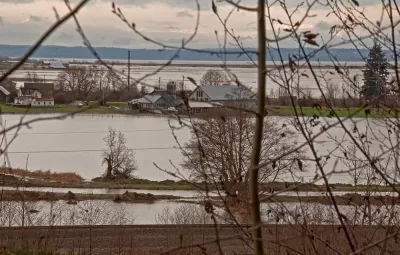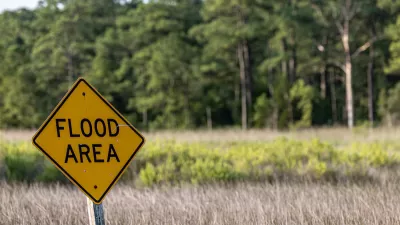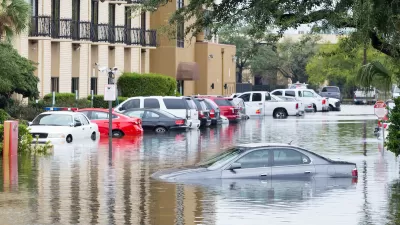New policies may be needed to encourage more responsible development and keep builders from constructing structures that will inevitably be flooded.

While floods can happen quickly, and the specifics of any individual flood can be surprising, they do happen regularly. According to a report from the Pew Charitable Trusts, "Flooding is the most costly and most common natural disaster in the United States."
Some of the cost may be mitigated by regulation and development. Some properties face flooding again and again, and the costs of these disasters add up. According to the story, "1 in 10 repeatedly flooded properties have received payments worth more than their value." Because some areas are more likely to flood than others, the piece argues there may be a way to create laws that lessen the property damage. It goes on to say, "The Pew Charitable Trusts supports proactive policy solutions that will break the cycle of repeated flooding and rebuilding in order to better prepare people and property for natural disasters, improve public safety, and put the NFIP [National Flood Insurance Program] on stronger financial footing."
What is not covered in the Pew piece is the political cost of keeping those who have suffered a natural disaster, or many disasters, from rebuilding. Even if policies might make logical sense, they may be difficult for public servants to enact.
FULL STORY: Repeatedly Flooded Properties Cost Billions

Alabama: Trump Terminates Settlements for Black Communities Harmed By Raw Sewage
Trump deemed the landmark civil rights agreement “illegal DEI and environmental justice policy.”

Planetizen Federal Action Tracker
A weekly monitor of how Trump’s orders and actions are impacting planners and planning in America.

Why Should We Subsidize Public Transportation?
Many public transit agencies face financial stress due to rising costs, declining fare revenue, and declining subsidies. Transit advocates must provide a strong business case for increasing public transit funding.

Understanding Road Diets
An explainer from Momentum highlights the advantages of reducing vehicle lanes in favor of more bike, transit, and pedestrian infrastructure.

New California Law Regulates Warehouse Pollution
A new law tightens building and emissions regulations for large distribution warehouses to mitigate air pollution and traffic in surrounding communities.

Phoenix Announces Opening Date for Light Rail Extension
The South Central extension will connect South Phoenix to downtown and other major hubs starting on June 7.
Urban Design for Planners 1: Software Tools
This six-course series explores essential urban design concepts using open source software and equips planners with the tools they need to participate fully in the urban design process.
Planning for Universal Design
Learn the tools for implementing Universal Design in planning regulations.
Caltrans
Smith Gee Studio
Institute for Housing and Urban Development Studies (IHS)
City of Grandview
Harvard GSD Executive Education
Toledo-Lucas County Plan Commissions
Salt Lake City
NYU Wagner Graduate School of Public Service





























